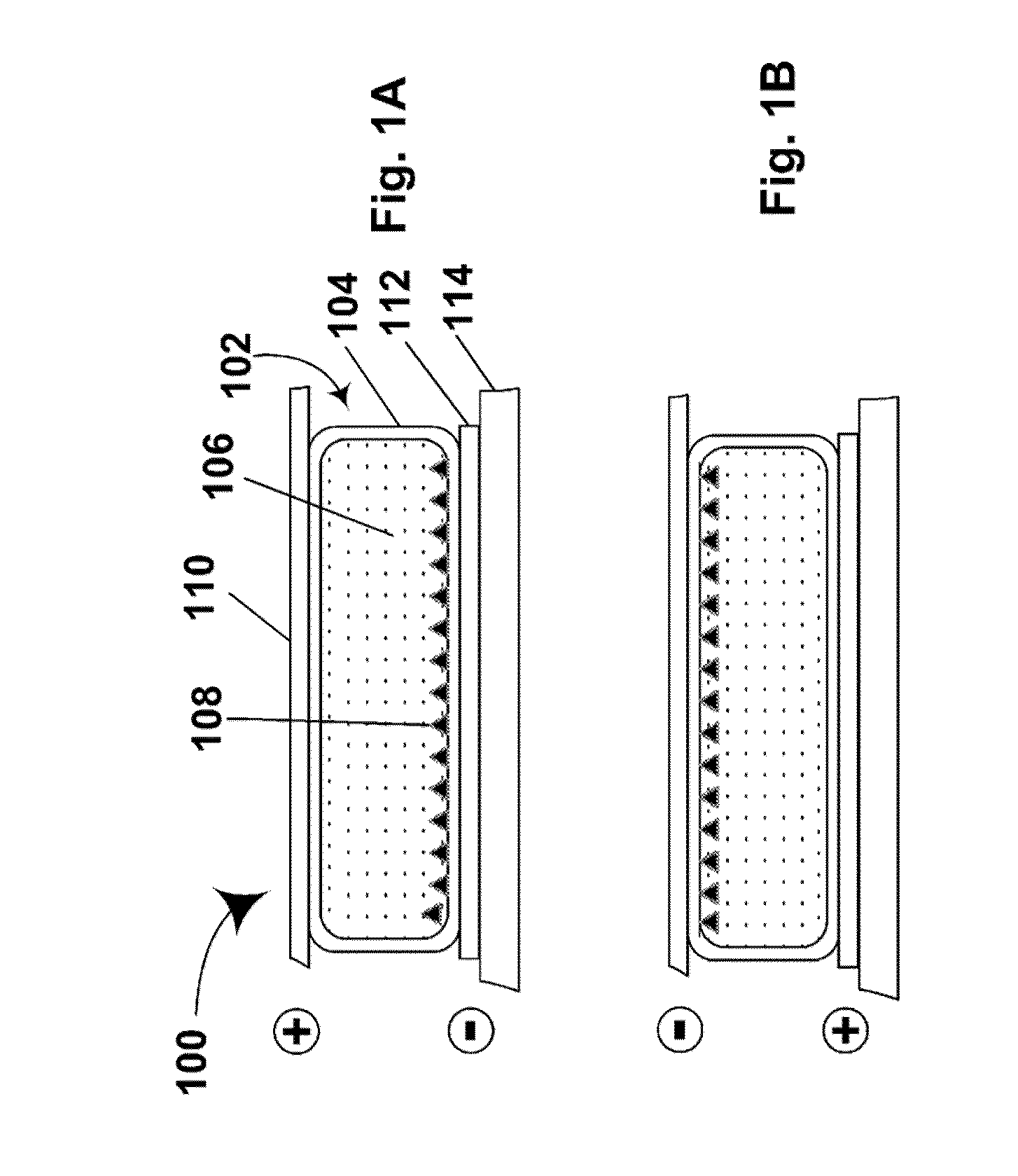Electrophoretic particles and processes for the production thereof
a technology of electrophoretic particles and processes, applied in the field of electrophoretic particles, can solve the problems of inadequate service life of these displays, preventing widespread use, and gas-based electrophoretic media appearing to be susceptible to the same types of problems
- Summary
- Abstract
- Description
- Claims
- Application Information
AI Technical Summary
Benefits of technology
Problems solved by technology
Method used
Image
Examples
example 1
Preparation of White Titania Pigment Containing 2,2,2-trifluoroethyl Methacrylate and Lauryl Methacrylate in the Polymer Shell
[0064]DuPont R-794 titania, surface functionalized with 3-(trimethoxysilyl)propyl methacrylate was prepared substantially as described in the aforementioned PCEP applications. In a 1 L plastic bottle, 500 g of this pigment was dispersed in 426 g (500 mL) of toluene by sonication. A 1 L jacketed glass reactor was charged with 1.7158 moles of monomer divided between lauryl methacrylate and TFEM to yield the desired molar concentrations of each monomer. The molar proportions of TFEM were 0.1, 1, 5, 10, 25, and 50 mole % with the remainder being lauryl methacrylate. The pigment dispersion was added to the reactor, and the reactor was purged with nitrogen and heated to 65° C. A free-radical initiator (5.0 g of 2,2′-azobis(2-methylpropionitrile, AIBN), previously dissolved in 110 mL of toluene, was added dropwise over 60 minutes. The vessel was heated under nitroge...
example 2
Preparation of Displays Using Electrophoretic Particles of the Present Invention
[0066]The polymer-coated titania particles prepared in Example 1 above were converted to electrophoretic displays in the following manner.
[0067]Part A : Preparation of capsules
[0068]Gelatin-acacia microcapsules were prepared using the pigments prepared in Example 1 and the following procedure. An internal phase was prepared by combining the following in a 250 mL plastic bottle:
[0069]
ComponentAmount55% BK-444 based Black25.88gPigment(see copendingapplication Ser. No.61 / 150,827, filed Feb. 9,2009) / Isopar E60 wt % White Pigment / Isopar106.77gE:13 wt % polyisobutylene / Isopar7.73gE:10 wt % Solsperse 17K / Isopar23.49gE:Isopar E:10.12g
The resultant mixture was then converted to gelatin-acacia microcapsules substantially as described in the aforementioned U.S. Pat. No. 6,822,782, Examples 27-29.
[0070]Part B: Preparation of displays
[0071]The microcapsules prepared in Part A above were allowed to stand and excess wa...
example 3
Electro-optic Tests
[0073]Electro-optical measurements were take on the single pixel displays prepared in Example 2 using a PR-650 SpectraScan Colorimeter. In these tests, the displays were repeatedly driven to their black and white extreme optical states using 250 millisecond 15 V pulses, then driven to either their black or white extreme optical state. The reflectivity of the optical state was measured about 3 seconds after the final drive pulse (to allow certain transient effects to pass) and then 2 minutes after the final drive pulse, and the two measurements compared to detect any image instability (i.e., lack of bistability in the image).
[0074]The results are shown in FIG. 6 (in which “DS” refers to dark state and “WS” to white state—the white state image instability values are negative since image instability in the white state results in lower reflectivity), from which it will be seen that there is a noticeable increase in image instability as the level of TFEM in the polymer...
PUM
| Property | Measurement | Unit |
|---|---|---|
| diameters | aaaaa | aaaaa |
| diameters | aaaaa | aaaaa |
| weight | aaaaa | aaaaa |
Abstract
Description
Claims
Application Information
 Login to View More
Login to View More - R&D
- Intellectual Property
- Life Sciences
- Materials
- Tech Scout
- Unparalleled Data Quality
- Higher Quality Content
- 60% Fewer Hallucinations
Browse by: Latest US Patents, China's latest patents, Technical Efficacy Thesaurus, Application Domain, Technology Topic, Popular Technical Reports.
© 2025 PatSnap. All rights reserved.Legal|Privacy policy|Modern Slavery Act Transparency Statement|Sitemap|About US| Contact US: help@patsnap.com



